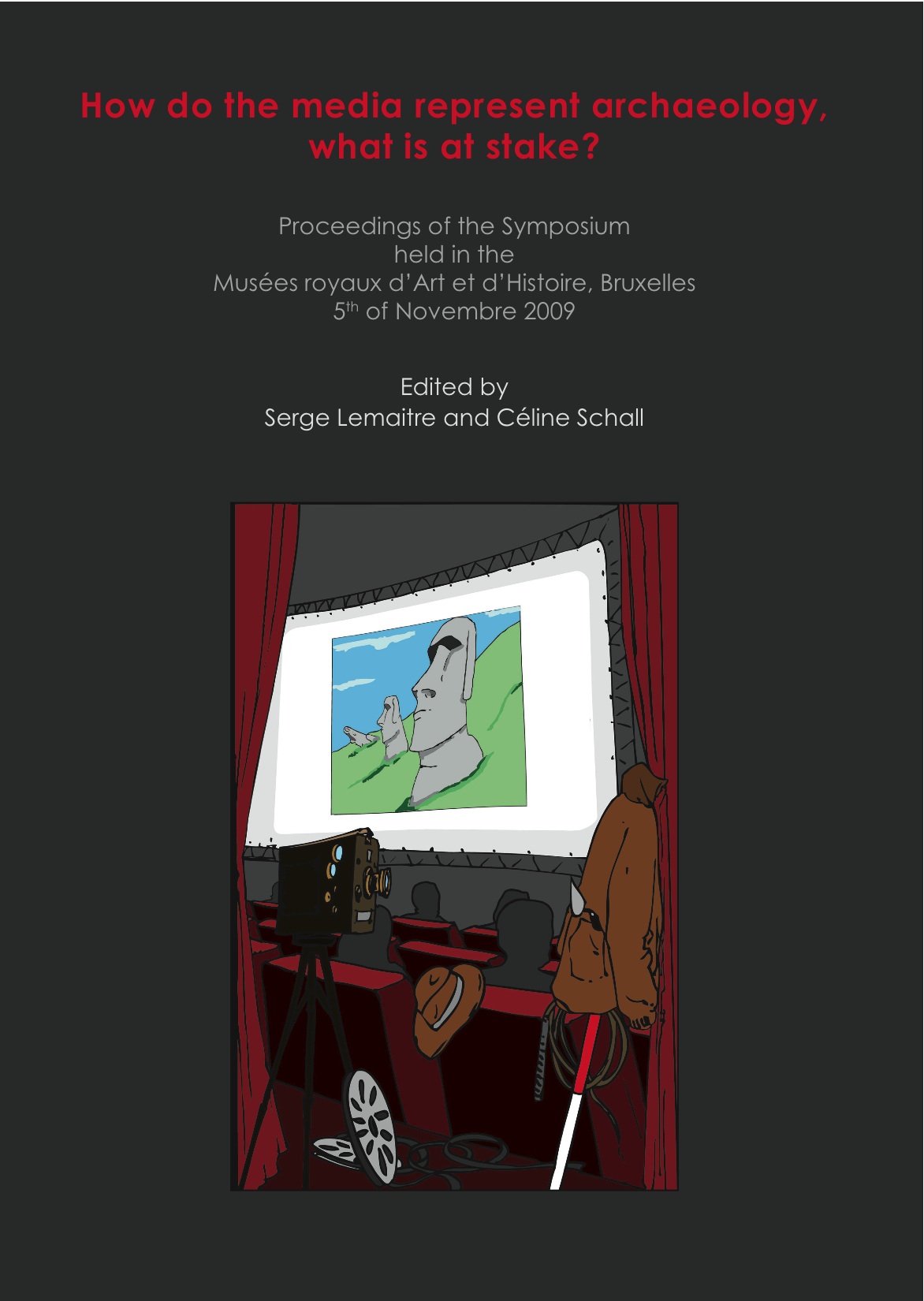- Recherche
- Recherche avancée

How do the media represent archaeology, what is at stake?, (actes coll. Musées royaux d'Art et d'Histoire, Bruxelles, nov. 2009), 2010, 149 p. -
This Conference was the opportunity to establish a progress report on how the media represent the archaeologist and archaeology. The analysis of the written and audio-visual press (radio, cinema, and documentary) and of literature (novels, cartoons, etc) help us understand how the archaeologist is perceived by our society, in the media itself or by the public that receives these messages. There are two perspectives to be considered: fiction and the “popularisation” media, even if links can obviously be established between the two. With the recent release of the fourth opus of the adventures of Indiana Jones, several discussion forums show that many archaeologists do not recognise themselves in the portrayal of their work. Adventurer without law, robber, after valuables, with little respect for indigenous populations, it is true that this Hollywood hero is very far from the job of archaeologist. Nevertheless, do these representations not fuel (consciously or unconsciously) our imagination? Is it not possible to use this icon to obtain funds for excavations and archaeological research? Do these caricatures of archaeology evolve with time? How, on the other hand, does the public understand these films and various messages? Does the public manage to distinguish between “fiction” and “reality”? Does this re-enactment contribute in particular to the general public acknowledging this science? The devices of popularisation specifically intending to widespread knowledge or to emphasize sites (like the written press, the documentaries, etc) are also influenced by spectacular representations. Archaeologists often consider that this re-enactment or the fictionalisation of scientific messages do not help to make them better understood. It is the case, for example, of recent docu fictions evoking the birth of mankind or the eruption of the Vesuvius at Pompeii with virtual images. With contributions from different countries (Brazil, France, United Kingdom, Argentina, Thailand…), these proceedings are a new point of view on archaeology and archaeologists in the contemporary societies.
Référence : 39372.
Anglais
35,50 €

